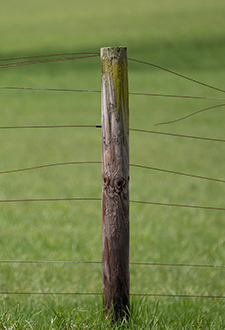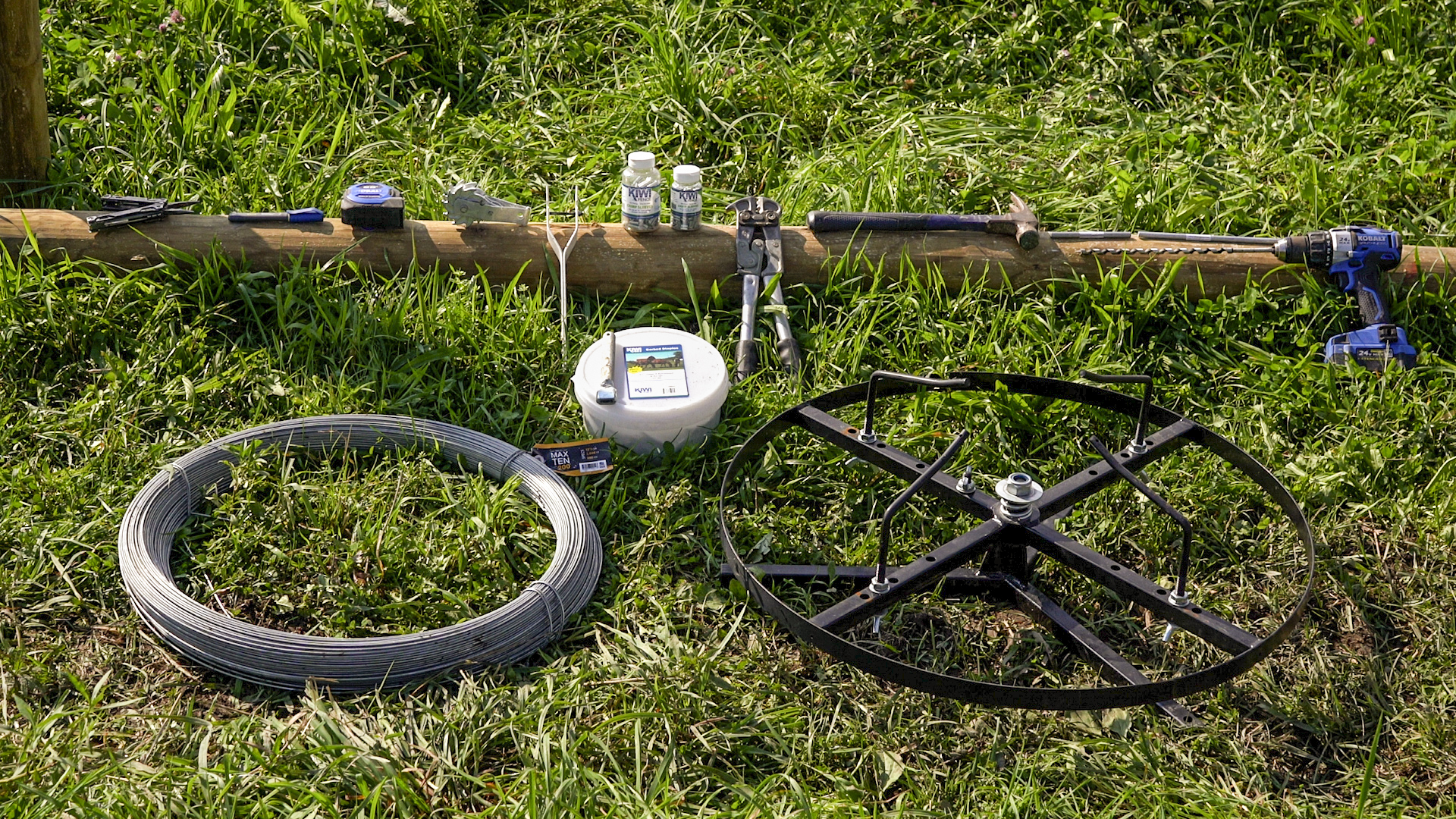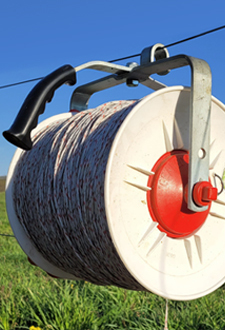BLOG
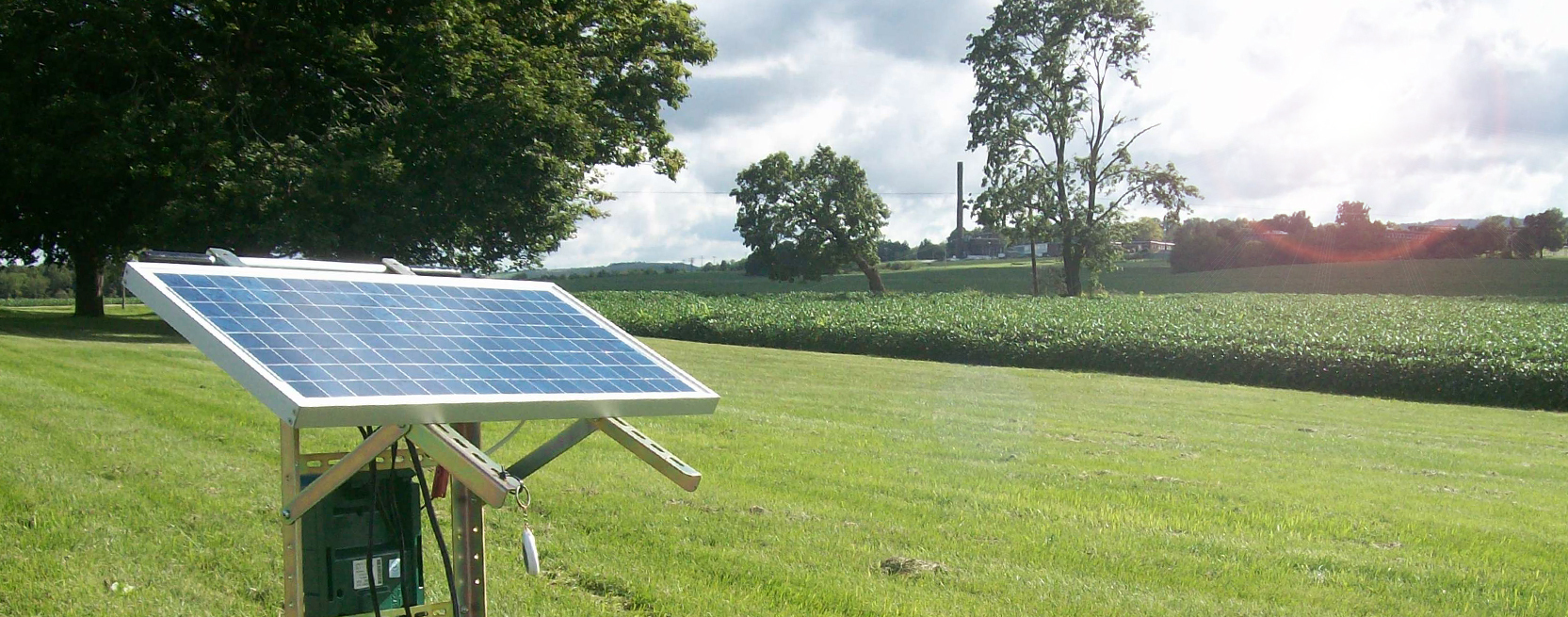
Charging Your Fence With the Power of the Sun
An electric fence is only as powerful, reliable, and functional as the energizer connected to it. Although a plug-in (AC-powered) energizer is the most reliable and most powerful energizer option, outlets are not often located near pastures, paddocks, or rotational grazing nets.

Battery-powered (DC) energizers are available for remote or portable pastures and are a solid second choice when choosing an energizer.However, there are cases where pastures are too remote or batteries are not an option. In those cases, we recommend using a solar-powered energizer.
Even though solar-powered energizers are last on our list, they are a very effective option to power electric fences. So, when AC and battery-powered energizers are not an option for your farm, have no fear, solar power is here!
Many words associated with solar power can deter farmers and ranchers from selecting one of these units as a valuable asset to their operation. However, solar-powered energizers have been improved over the years, and they are now higher functioning, more reliable, and more powerful than ever.
How Does a Solar-Powered Energizer Work?
LiveScience.com has a great explanation on the inner workings of a solar panel. In order for a solar panel to be an effective tool, it needs to produce energy. To produce energy, a solar panel uses the particles of light from the sun to “knock” electrons free from atoms. This “knocking” is the energy used to power your energizer. Each solar panel is made up of small
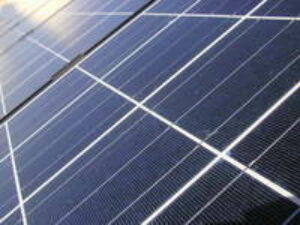
units called photovoltaic cells. There are quite a few of these cells making up each solar panel, and the larger the panel, the more photovoltaic cells. Each cell is made up of two semi-conductive materials, and, in most cases, this material is silicon. In order to create an electrical charge, each silicon side needs an opposite charge. To achieve this, one layer has phosphorous added giving the silicon a negative charge. The second layer of silicon gets a positive charge when boron is added. An electrical field is created between the two silicon layers, and when a photon of sunlight “knocks” an electron free, the electrical field will push the electron out of the silicon, which creates power! Metal conductive plates are added on each side of the silicon cells to collect the free electrons and transfer them to wires. Now these electrons flow through wires like any other source of electricity. Pretty simple, huh?
What are the Components of a Solar-Powered Energizer?
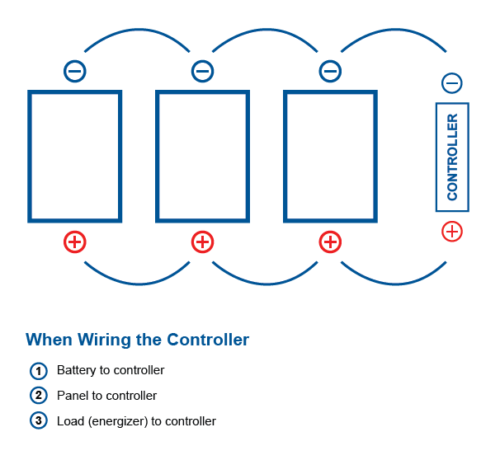
The solar panel size will depend on the size of your energizer and the amount of fence you are energizing. Generally, you will need about 10 watts of energy on your solar panel for every 1 joule of energy off your energizer. Your solar panel needs to be large enough to charge your battery. In this case, go big or go home applies. We only carry solar panels large enough to power a 10-joule energizer. If you are wanting to power a larger energizer, you may wire multiple panels together.
You may use any type of DC-powered energizer. The size of your fence and your animal type will determine the best energizer for your needs.
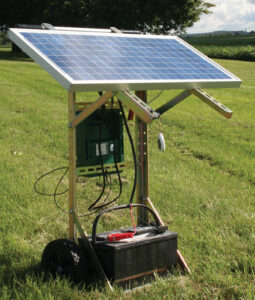
The most critical component of your solar-powered energizer is your solar charge controller. A solar charge controller saves your battery from overcharging, keeps energy and power from leaking out of your battery, and disconnects your energizer if the voltage gets too low. We offer two models of charge controllers, and your situation will determine the ideal model for you. For an ideal operation, we recommend changing your charge controller every 2 to 3 years to prevent any damage to your panel, battery, or energizer. In order to test your charge controller, you can use a voltmeter.
You will need to purchase wiring to connect your battery to your solar charge controller. Additional wiring will be needed if you wish to add multiple panels to one energizer.
A 12-volt, deep-cycle battery is recommended. You will need to use a deep-cycle battery due to their design for discharge over a long period of time and its ability to be recharged thousands of times. To increase the life of your battery, the solar charge controller will disconnect the load, or energizer,

from the battery when its voltage drops below your preset threshold. Once the battery’s voltage has increased, it will continue to supply power to your energizer. The time between this shut off is much shorter than if the battery were to run low on voltage until it was unable to power your energizer. You may also want to consider purchasing multiple batteries to help supplement your solar-powered energizer. By setting up a backup battery, you can rest easy knowing your fence will stay hot.
Another product to consider for your fence is the Fence-Alarm. This solar-powered system alerts you via email or text when the voltage on your fence drops below your preset threshold. Using a solar-powered energizer and Fence-Alarm can help you rest easy knowing your fence is hot and working well. This system is ideal for fences you do not visit regularly.
When purchasing a solar-powered unit, it is crucial to remember the large input cost associated with the panel, charger, and battery. Solar chargers are not economically efficient. Although they essentially run for free, they require large input costs. However, they are worth every penny for farmers and ranchers who have no other option for powering their fence lines.
When selecting a solar-powered unit, you need to keep in mind the amount of sunlight your panel will receive. If you are in an area with little sunlight, you will need to invest in a larger panel to collect more sunlight to power your battery. You will also need to adjust the angle of your panel based on your location. Check out the diagram below to help determine which zone you live in and how to set up your panel accordingly.

And watch our video on how to install your solar panel, charger, battery, and energizer.
Kencove offers a few options for solar energizers. You can select one of our all-in-one solar energizers, build a solar-powered energizer from any panel and energizer, or use our solar dolly to make your unit portable.
Keep Kencove in mind the next time you are building a solar-powered fence. We have everything but the battery! And our product specialists will help you select, build, and set up the energizer system that works best for you!




